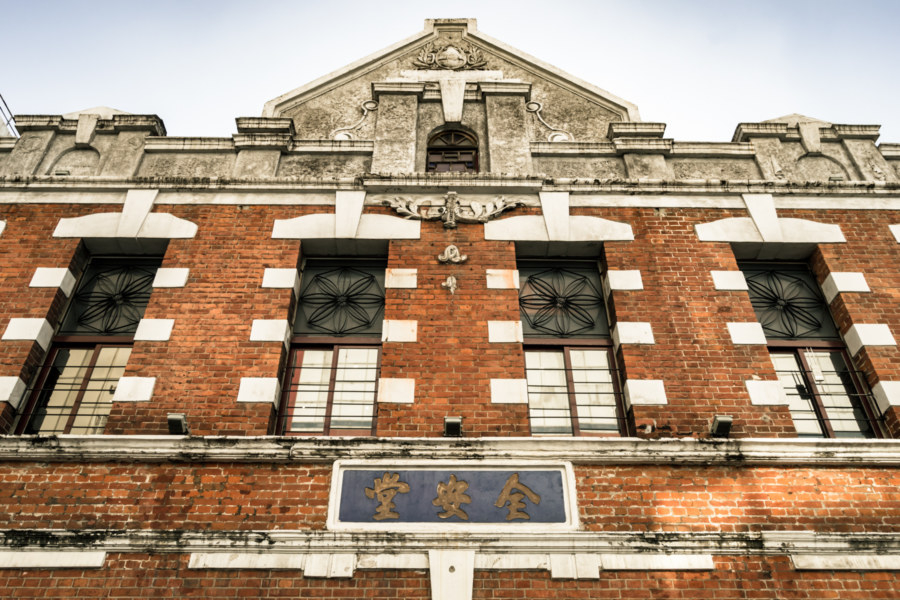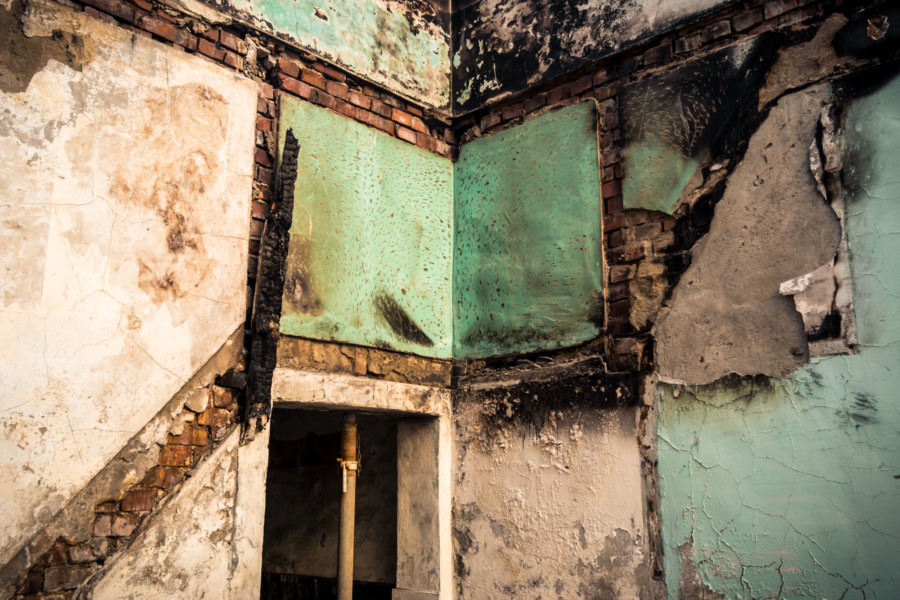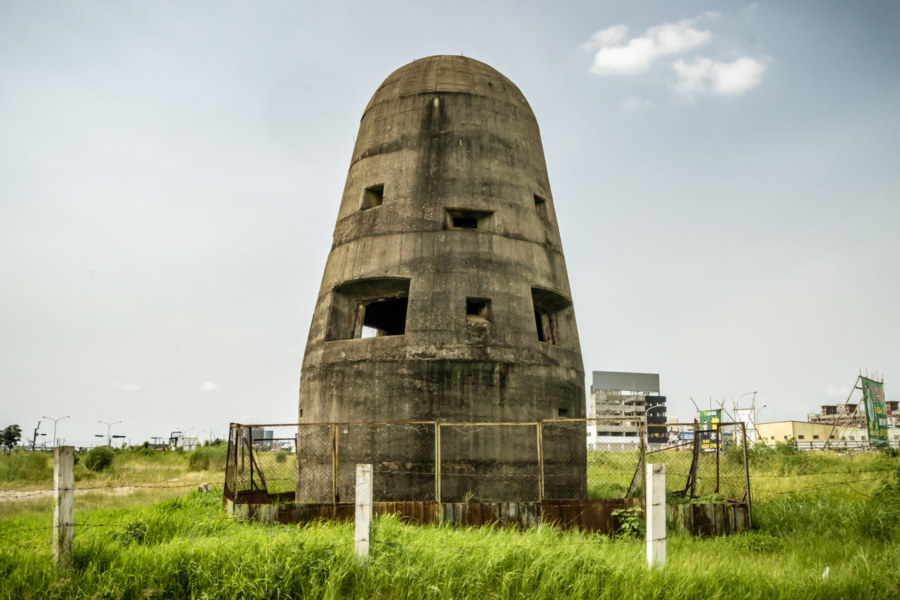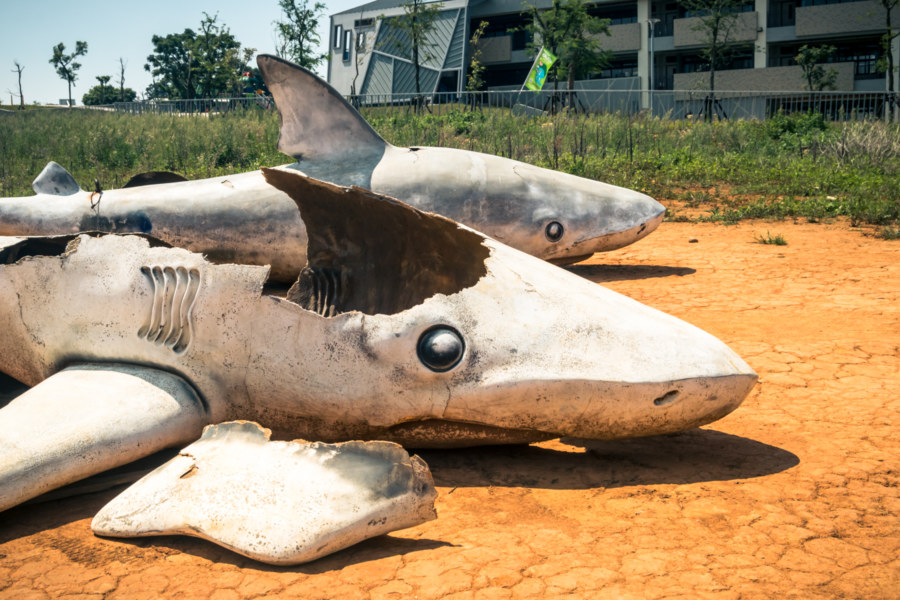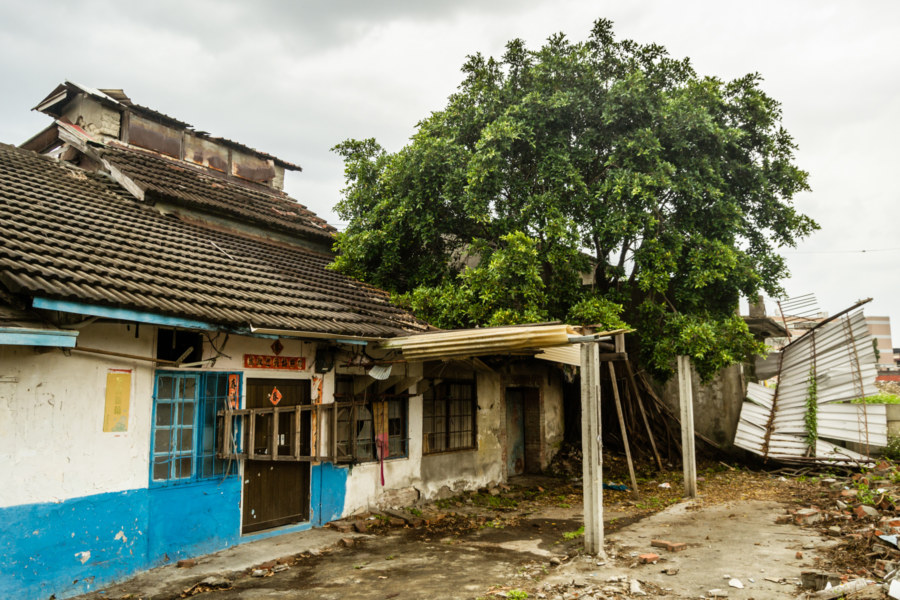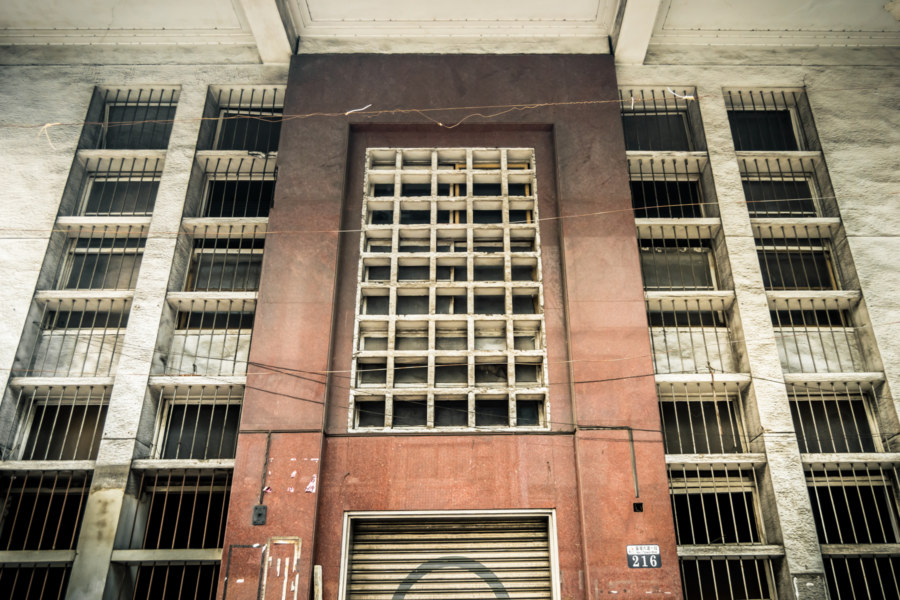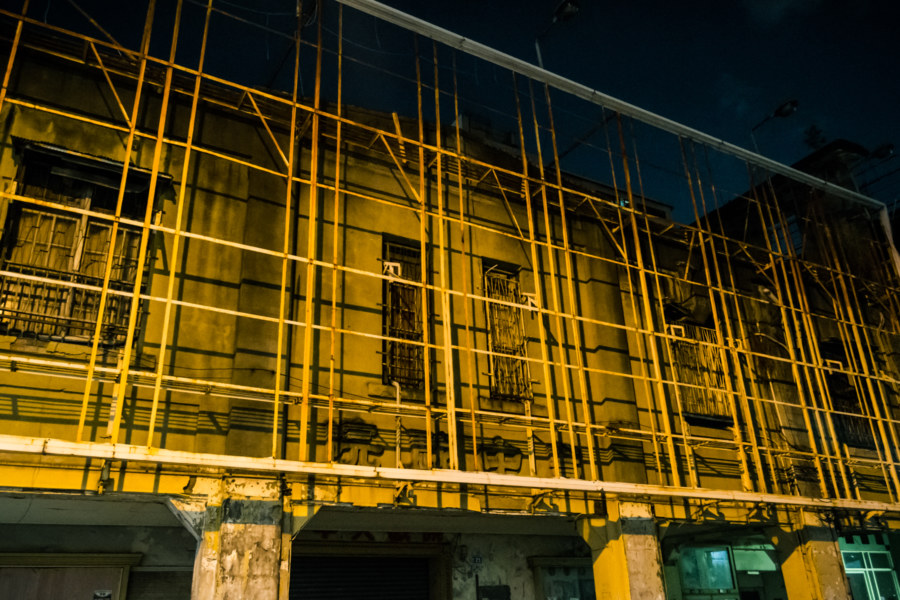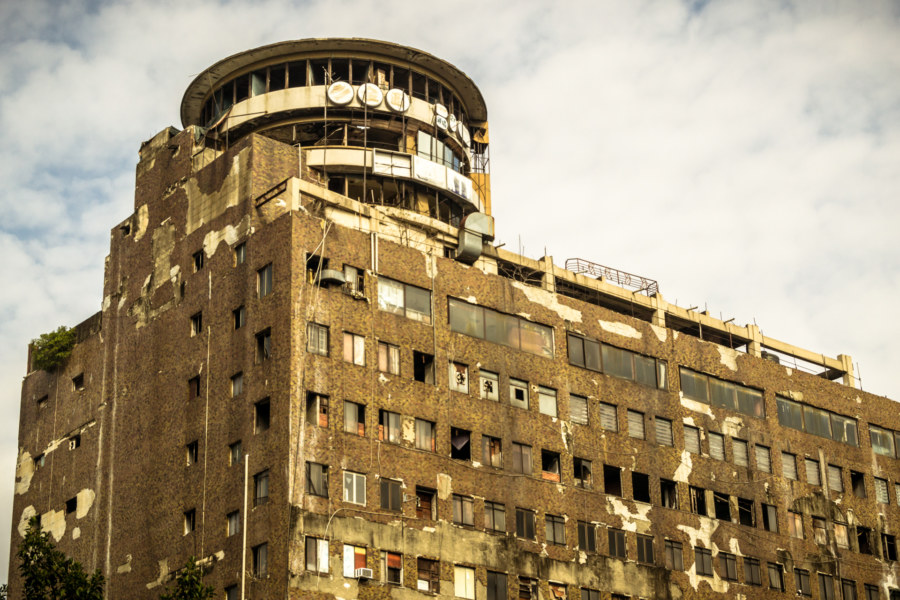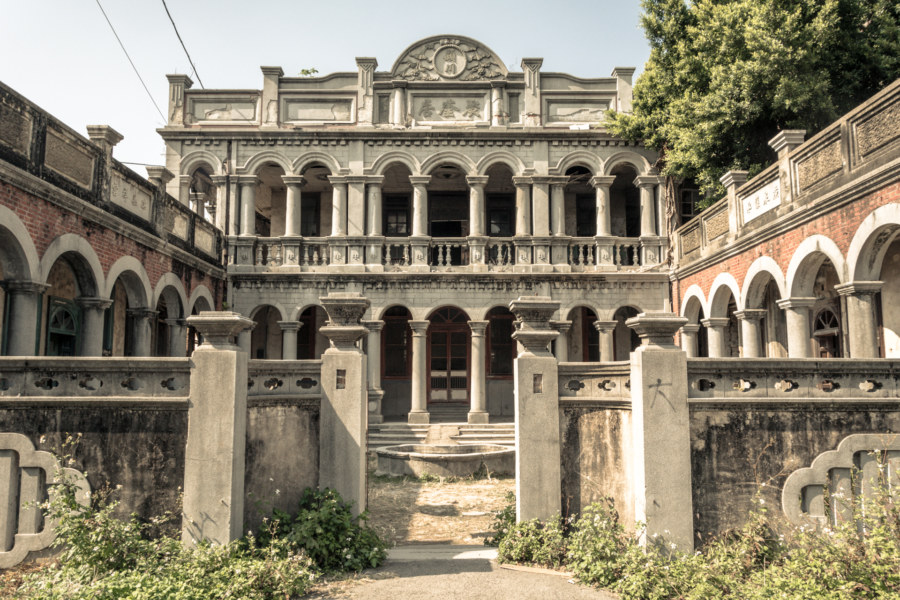Quán’ān Hall 全安堂 is a century-old building on Taiwan Boulevard 臺灣大道 not far from the old train station in Taichung. Built in 1909 with red brick, reinforced concrete, and a Neo-Baroque style commonly attributed to Japanese architect Tatsuno Kingo 辰野金吾 (中文), it was a pharmacy for many decades, and more recently a bakery. A few years ago it was rebranded as the Taiwan Sun Cake Museum 台灣太陽餅博物館, which now operates a gift store on the ground floor and, beneath the exposed wooden beams of the restored rooftop on the second level, a cafe, event space, and interactive museum.
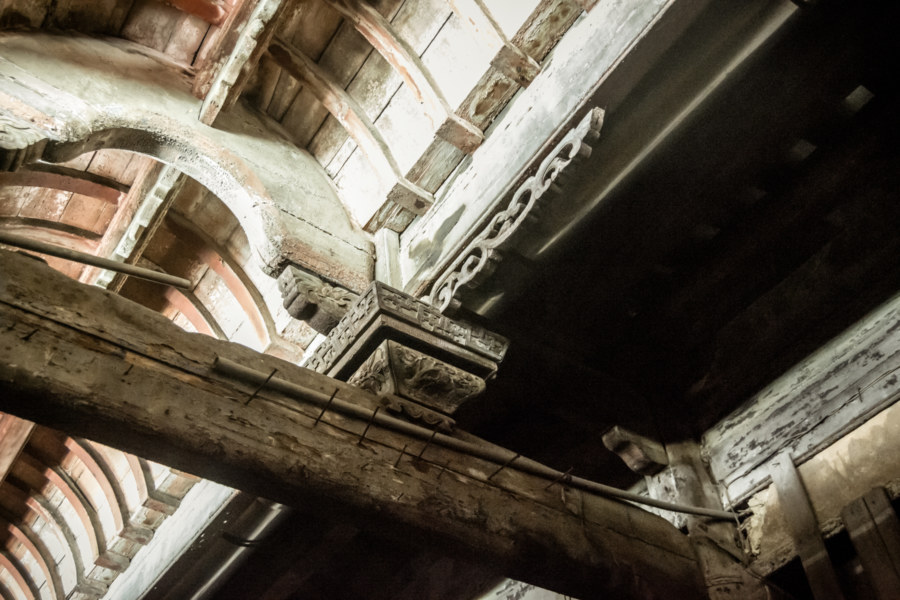
This keyword is reserved for posts about the many disused and abandoned buildings surrounding the train station in central Taichung.
An Empty Shell on Dayong Street 大勇街屋
The south side of central Taichung is undergoing massive changes with the opening of the new Taichung Station. Formerly one of the most rundown parts of urban Taiwan, it is now the front of the station, and many old and decrepit buildings like this house on Dàyǒng Street 大勇街 are being torn down to make way for lucrative new developments. It is a minor ruin, one for which I have uncovered no specific history, although a little sleuthing around on Google Street View indicates the building was still intact in February 2015 and boasted a simple signboard for a tea shop: 茶點複合式冷飲. Judging by the construction style I would guess this place dates back to the 1960s, give or take a decade. Gathered here are several photos shared more for their aesthetic appeal than intrinsic historic value.
Taichung Aerodrome Gun Tower 臺中飛行場機槍堡
Not much remains of the former Taichū Aerodrome 臺中飛行場, a Japanese colonial era airbase originally built in 1911 on the northwestern periphery of central Taichung. The airbase saw a lot of action in World War II and several kamikaze units were stationed there in the final months of the war. After the arrival of the KMT it was used as a hub for aviation research and development before entering into civilian use in the 1970s as Shuǐnǎn Airport 水湳機場. In 2004 operations were transferred to the nearby Taichung Airport 台中航空站 and, over the following decade, the former Japanese airbase was completely demolished as part of an ongoing city-wide urban renewal plan. The only building spared was a lone gun tower built in 1940, formally designated a historic site in 2006, and officially known as the Former Japanese Army Taichung Aerodrome Gun Tower 原日軍臺中飛行場機槍堡.
Taichung Shark Cemetery 台中鯊魚墳場
Taichung Shark Cemetery (台中鯊魚墳場) is an unlikely roadside attraction near Tunghai University (東海大學) in Xitun, Taichung. There is no great mystery here—a nearby restaurant and banquet hall by the name of Tong Hai Fish Village (東海漁村) dumped a bunch of junk in this farmer’s field sometime prior to 2009, and since then it has become a popular place for young Taiwanese to visit and take photos.
Shuinan Tobacco Barn 水湳菸樓
Shuǐnǎn Tobacco Barn 水湳菸樓 is a historic Japanese colonial era building located in Beitun, Taichung. It is an “Osaka-style” tobacco barn (named after Osaka Castle) much like these more famous examples from Meinong. Nobody seems to know for sure when it was built, though this article claims it is a century old. Without better information I would say the 1930s are a safe bet—that’s when industrial-scale tobacco cultivation was spreading all over central and south Taiwan—but it might be older than that.
Taichung First Credit Union 台中第一信用合作社
Taichung First Credit Union 台中第一信用合作社 is a post-war bank located in Central Taichung. According to this blog it was abandoned in 2001. Last week I went to go take a quick look while surveying the many historic buildings in the area. There were construction workers setting up in front and there were no other points of entry so I did not gain access. Even so, from a quick look inside the place appears to have been cleared out—and they might even be preparing to renovate the building for one reason or another.
Fengzhong Theater 豐中戲院
Fēngzhōng Theater 豐中戲院 is one of many abandoned theaters in downtown Taichung. Located a stone’s throw away from Taichung Station, this theater was originally the Taiwan Opera Theater 台灣歌劇戲院, a performance venue founded at the very end of Japanese colonial rule in 1944. According to this source the name was changed to Fengzhong Theater when it was converted for use as a cinema in 1953. It was in continuous operation until 2004 when it was closed and finally abandoned.
Qianyue Building 千越大樓
The Qiānyuè Building 千越大樓 is one of the most recognizable ruins in central Taiwan. Located only a short distance from Taichung Station 台中車站, it is impossible to miss if you bother to look up at some point while walking deeper into the city. This mixed-use commercial and residential high-rise was originally built in the 1970s and, thanks to its location at the very heart of the famous Taichung Electronics Street 台中電子街商圈, reached its apex during the consumer electronics boom of the late 1980s and early 1990s.
Jukuiju 聚奎居
Jùkuíjū 聚奎居 is an abandoned mansion in Wuri, Taichung, built in 1920 by Chén Shàozōng 陳紹宗, a wealthy businessman and landowner. The architecture is a combination of the traditional Taiwanese sānhéyuàn 三合院 (a U-shaped building with three parts surrounding a central courtyard) and the Baroque Revival style of the Japanese colonial era. It is located on the rundown, industrial margins of the city, along an otherwise unremarkable lane next to a military base, looking completely out of place in space and time.
